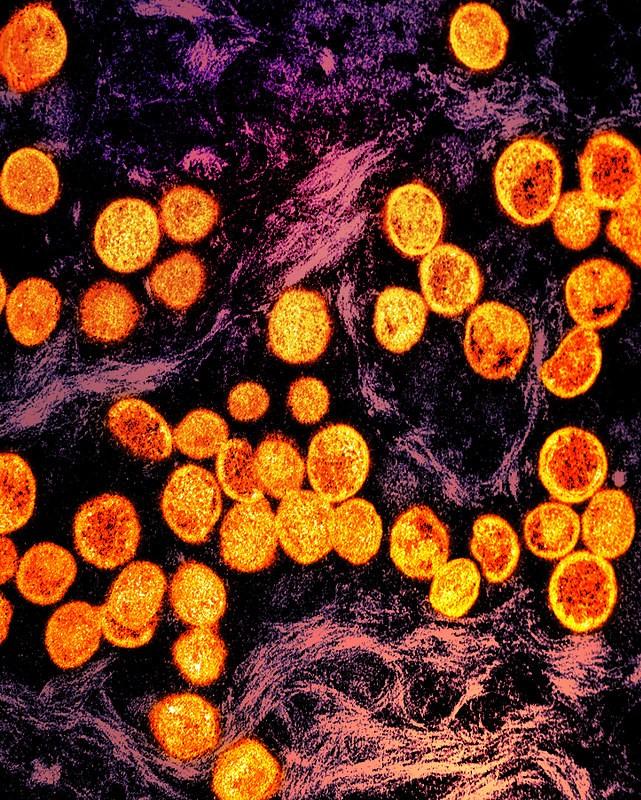New, updated epidemiologic information about the US monkeypox outbreak appears today in Morbidity and Mortality Weekly Report, showing that 70% of the 26,384 US monkeypox case-patients confirmed to have the virus between May 17 and Oct 6 reported recent male-to-male sexual contact.
Ninety-five percent of US cases have occurred in men, and among 21,211 (80%) cases in people with information on race and ethnicity, 6,879 (32%), 6,628 (31%), and 6,330 (30%) occurred in Black, Hispanic, and White people, respectively, researchers from the Centers for Disease Control and Prevention (CDC) said.
Among 59% of people with data on gender and recent sexual or close intimate contact, 70% reported recent male-to-male sexual contact. Black and Hispanic people continue to be disproportionately affected, with Black men seeing increasing rates of disease spread.
"From May 17–July 17 to July 18–October 6, the percentage of cases among Black persons increased 67%, from 21% to 35%, whereas the percentage of cases among Hispanic persons decreased 6%, from 33% to 31%. Among White persons, the percentage of cases decreased 28%, from 39% to 28%," the authors said.
High number of patients HIV-positive
Of cases with known HIV status, 57% had HIV infection. Almost all cases in the United States (25,001; 98%) have occurred in adults. Six US deaths have been associated with the illness, and 1,870 patients with the virus have required hospitalizaton.
The authors said continued outreach efforts should be made among Black and Hispanic men who have sex with men (MSM) to increase vaccination. HIV status should also be ascertained if it is not known during monkeypox diagnosis.
"Public health prevention efforts should emphasize vaccination for persons at high risk for Monkeypox virus exposure and prioritize populations most affected by the current outbreak, including MSM, Black and Hispanic persons, and persons who are immunocompromised," the authors said. "Efforts should also focus on reducing stigma when communicating about monkeypox transmission and ensuring equitable access to testing, vaccination, and treatment options to reduce health disparities."
Yesterday, the CDC reported 151 more monkeypox cases, bringing the national total to 28,881 cases.
Two case studies of female monkeypox patients
Yesterday Emerging Infectious Diseases published two case reports of women who likely contracted monkeypox through sexual intercourse and developed vulvar and intravaginal lesions.
The women are a 22-year-old from the United States and an 18-year-old from France. The American woman sought care at a hospital in Brooklyn with severe pain and vulvar lesions and reported intercourse 2 weeks earlier with a man who had some bumps on his penis.
The woman was admitted to the hospital and began a 14-day course of tecovirimat (600 milligrams every 12 hours) and told to isolate for 21 days. She was tested for a number of sexually transmitted infections but was positive only for monkeypox.
An estimated 400-plus cases of monkeypox have been seen in US women this year.
In France, the 18-year-old described fever, muscle pain, and lesions across her genitals. She reported intercourse and oral sex with her boyfriend 8 days earlier.
"To date, only a small proportion of infections have been reported in women; only 1.2% of total cases in Europe have been reported in women," the authors said. "Our patient had a regular sexual partner who had MPXV [monkeypox] symptoms, thus reinforcing that sexual transmission might play a predominant role in the outbreak."





















